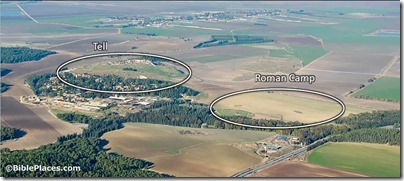Short one billion dollars to complete the Grand Egyptian Museum, Egypt has pushed its opening back from this year to 2022. Zahi Hawass has ideas on how to raise the money.
A special edition of DigSight reports on the excavations of Lachish.
A special issue of World Heritage magazine is devoted to historical sites in Iraq.
The 18th Annual Bible and Archaeology Fest will be held this year in Atlanta.
The National Academy of Sciences has criticized the political use of archaeology in a recent report.
The Islamic State is selling looted art.
Aviva and Shmuel Bar-Am give a history of the recent excavations at Magdala.
Carl Rasmussen notes that the rooftop of Nebi Samwil is now open and photos are allowed at Jacob’s Well.
The Dome of the Rock may re-open to non-Muslim visitors.
Some Israeli history buffs have re-enacted the Crusader battle at the Horns of Hattin. Check out the photos.
HT: Agade, Ted Weiss, Charles Savelle

